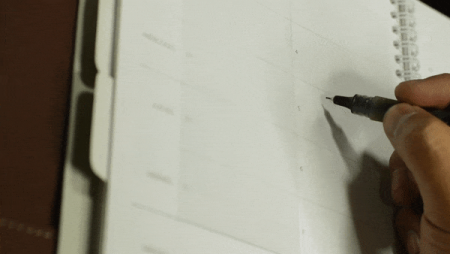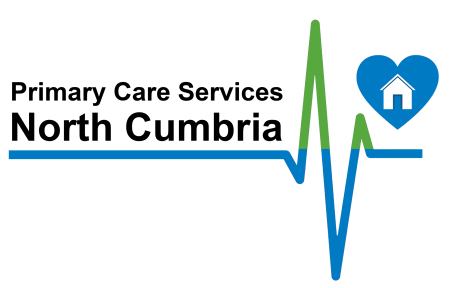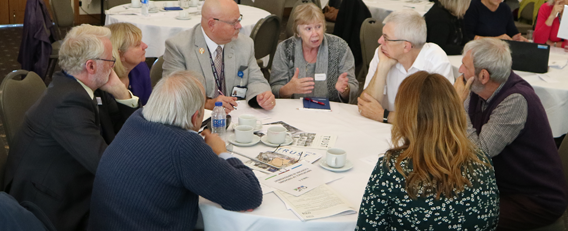Introduction
In Cumbria we learned it was important for everyone to be clear about the purpose and scope of the work. Nobody wants to waste time on things they can’t influence. Clarity….and repeating the aims of the groups at every meeting is a useful way of reminding people what can and is being achieved. We also need to be clear about the areas that are out of scope, ie, money, safety regulation and workforce.
On the following tabs are some statements to help you reflect on what is needed to involve people in a meaningful way and some definitions to describe the type of work you may be involved in…

How the following statements would be described...
| 'This is what I've done' | Briefing |
| 'This what I've done/want to do, what do you think?' | Engaging |
| 'What are the options and which one do you think we should take?' | Consultation |
| 'Let's get together to discuss the problem and see if we can agree what we ought to do?' | Joint problem solving |
| 'Can we reach a deal on what to do?' | Negotiation |
| 'This is the problem - you decide what to do' | Empowerment |
Plan Ahead
| Be clear at the outset... | … on the level of involvement and the impact people may have (what are the immovables….needs to be realistic) |
| Have a clear structure... | … that will support people to work effectively and sustain their interest |
| Are participants helping to influence decision making?... | … If so, how much influence will they have in the process? |
| Involve participants... | … in the setting of the agenda |
| Allow participants... | … the freedom to question the way services are delivered |
| Consider ways to strengthen relationships... | … between professionals from different organisations and service users |
| Focus on sharing learning and... | … building the capacity of individual service users/groups through peer support and mentoring |
| Facilitate... | … networking, information sharing and communication |
| Use a range... | … of methods to communicate and share information |
Meeting Management
Working in formal groups can be quite daunting for some people.
The following dropdown boxes include practical advice in each step for planning a meeting.

| Choose a date... |
… avoid dates that might affect whether people can attend. This could be for child care reasons, school holidays, religious reasons, major sporting event etc. |
| Provide... | … adequate notice of meetings/events |
| Timings... | … avoid starting and finishing when people will have to travel in rush hours; avoid school start and finish times and school holiday dates where possible |
| Format... | … consider what is appropriate e.g. informal chat, formal meeting, drop in sessions over a lunchtime |
| Consider accessibility... | … issues and reasonable adjustments |
| Choose a venue... | … where people will feel comfortable e.g. community and voluntary sector venues may be more inclusive |
| Use a range... | … of forums to attract the level of participation and ensure that you have the right group of people |
| Consider the mix of activities... | … Should you plan for a meeting, small group discussion, user voice meetings, one to one meetings, drop in sessions, monthly briefing, newsletters, social media updates? |
| If a change in service delivery is proposed... | … how will you ensure you target those people who need to be aware of a proposed change? How will you ensure people understand the change and what is being proposed, what is currently happening, timeframes and what they can influence etc.? |
| Know your enthusiasts and key influencers... | … Focus efforts on engaging the majority and don’t get side tracked by the small minority |
| Advertise the event appropriately... | … the advert should be clear, simple and in plain English (http:// |
| Develop the agenda... | … allow time for introductions; each item; for discussion, networking and for breaks |
| Keep presentations short (15-20 minutes)... | … and use a range of styles to help people keep concentration |
| Send any papers out in advance... | … to support people to participate on equal terms (electronically, hard copy, accessible formats) |
| Only provide information which is... | … relevant, timely and meaningful |
| Have a clear plan... | … Ask yourself – what you hope to achieve in the meeting/event?, how the participants can help you achieve it?, this will focus your agenda. No one wants a meeting for the sake of having a meeting! |
- Think about access for people with mobility issues
- Think about parking
- Is it on a bus route?
Access is about giving people the equal opportunity to participate fully in whatever is being offered in the way that best suits them.
Is there a better way of doing it?
I.e. if you are interested in the views of young mums do you need to organise a meeting and invite them or could you go along to a soft play centre and chat informally?
Consider things like:
- Access to public transport
- Flat level access
- Parking and drop off points
- Hearing impairments
- Familiarity for target audience
For more information visit: www.
| Confirm your attendance in advance of the meeting/event, if requested | Maintain confidentiality within the room and in relation to correspondence between group members. |
| When you circulate a document, remember to make it clear whether the document can be shared with others | Forward agenda items when requested |
| Treat others as you would like to be treated yourself | If you are unable to attend a meeting, forward the results of any actions you were responsible for from any previous meeting, if possible |
| Listen actively and show respect, especially during lively discussions | If you would like to send another representative to the group, try and avoid this on a regular basis and discuss it first with the meeting organiser |
| Use clear and concise information that also respects the diversity of communication needs which varied group members may have | Start and end meetings punctually |
| If you challenge, challenge the statement and not the person | Start meetings with introductions – don’t assume everyone knows each other |
| If you would prefer a point not to be in the group minutes, request this through the chair or facilitator | Have mobile phones and electronic equipment turned off during meetings |
| If using a laptop, use respectfully. Do not answer emails or engage in instant messaging |
How will the meeting be facilitated?
Inject life into your meetings. As part of the planning process:
- Consider rotating the role of Chair
- Seek agreement in advance so people are prepared
- Rather than have a Chair, have a meeting facilitator
- A meeting facilitator can lead the meeting and navigate through the agenda and if necessary manage certain behaviours. Bring the quieter voices in and perhaps quieten the over enthusiastic voices down, they need the confidence to say ‘…an interesting view, we’ve heard what you think, – what do other people think?
- You could collectively agree to introduce the ringing of a small bell – to be rung when a participant is labouring a point or being repetitive. This sends the message about the value of being brief and concise.
- A squeaky toy to use if someone does not understand what is being said!
- A meeting facilitator needs to set the pace by telling the group how long they have to consider a particular points and ensure the right balance between listening and debating.
- Welcome everyone
- Have effective chairing/facilitation of meeting/event
- Be clear about housekeeping, introductions and ground rules, create a positive atmosphere
- Ask each person to introduce themselves. How should this be done? Consider how this may be inclusive and supportive, e.g. do participants need to know each other’s job title? May this be undermining; could it make a member of the public or volunteer feel less important?
- Do you need name badges; tent cards for people to write their name on?
- Think about – What does the job title tell us? You could ask people to say their name and briefly, one or more of the following: why they are present?; their role; their organisation if applicable etc
- Keep to the agenda or programme so people can follow where they are
- Timings – start and finish on time, keep to the break times
- Build in some flexibility on timings to your event
- Encourage everyone not to talk too fast or dominate the discussion
- Encourage everyone to use plain and simple language with words in full, no jargon
- Welcome questions and clarification

- Agree in advance who will take the notes or action points.
- The purpose of notes is to record what was done, not what was said.
- They should summarise the key points of discussion, key challenges that have been raised and the decision or recommendation made, not be verbatim notes.
- Notes should include allocated actions and make clear who has the responsibility for an action and the date by which it should be completed. Or keep a separate action log.
- Remember actions should be shared by all – if you notice one person is being asked or expected to do everything then the process should be reviewed.

- Summarise at the end of the meeting that everyone understands what has happened and what is going to happen
- Always ask yourself – ‘What did I learn from that situation’? whether it was a meeting, conversation, presentation, focus group etc.
- Follow up actions as required, and be clear who is responsible for each action and monitoring progress
Be aware of the concept of GROUPTHINK
Groupthink can occur when a group of people become so similar in their outlook that they lose the ability to be creative in their thinking and decision making.
The result can be:
- An environment where perspectives are not challenged
- External voices are not listened to
- Not listening to those who may be critical
- The groups behaviours result in similar positions being taken on issues
The dangers of Groupthink are that we are unlikely to look at any limitations of the agreed approach.
Or be aware of any potential failings or be alert to threats and possibly blind to new opportunities.
Activity:
-
Can you think of a situation where this might happen?
-
How could you challenge it?

Source: How to crack down on Groupthink – Dr G Brewer People Management November 2017
-
Ensure meetings are open, with people encouraged to identify any weaknesses with proposed approaches to overcome and address.
-
Encourage people regardless of their status to have an input rather than keeping decision making at a senior organisational level.
-
Acknowledge that it is not always easy for people to be critical or even put forward their opinion, so when they do, take it on board and even if it is an idea that is unlikely to work, tell them why, so they at least know that it has been considered.
-
Decision makers should take a step back and look at the bigger picture. It’s tempting to follow a pre-agreed plan of action without thinking about whether it is the right thing to do
Encourage wide ranging and diverse opinions.
Do you want to know more about Groupthink?
‘Effects of Groupthink and How to avoid them’ by Forbes Coaches Council
Drowned out voices
One common area impacted negatively by the nuances of “groupthink” arise when brainstorming potential solutions for an initiative. The overly exuberant drown out those who are more thoughtful and deliberate in their contributions. A more innovative approach involves a technique called “brainwriting” that allows all ideas to be heard and considered. – Jackie Nagel, Synnovatia
Limits and inclusion
Think you can be open-minded? We all have mental capacity limited by what we know and the language of our specialty. This paves the way to groupthink. It feels safe and natural to spend time with others who think the way we do, so we need to consciously choose devil’s advocates or people with their own different language, mindset and point of view for our meetings. – Linda Watkins, Leadership for Today
Focusing on only what is known
Too often, groups tend to focus on what is generally known rather than focus on critical information that has not been yet explored. Learn to appreciate the power of the question rather than the need to rush to answers. The next time you’re in a group meeting, start with, “What problem are we trying to solve?” and keep testing with, “Are we answering the right question?” – Sheri Nasim, Center for Executive Excellence


Throughout the process, try to think of the following:
| Be clear at the outset... | … on the level of involvement and the impact people may have |
| Have a clear structure... | … that will support people to work effectively and sustain their interest |
| Are participants helping to influence decision making? | … If so, how much influence will they have in the process? |
| Involve participants... | … in the setting of the agenda |
| Allow participants the freedom... | … to question the way services are delivered |
| Consider ways to strengthen... | … relationships between professionals from different organisations and service users |
| Focus on sharing learning... | … and building the capacity of individual service users/groups through peer support and mentoring |
| Facilitate... | … networking, information sharing and communication |
| Use a range of... | … methods to communicate and share information |


